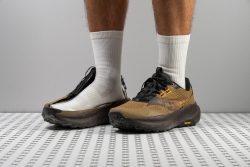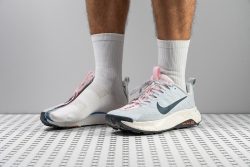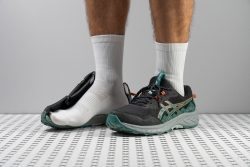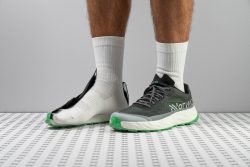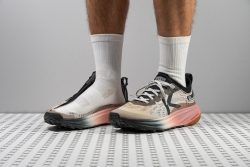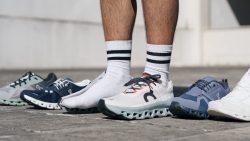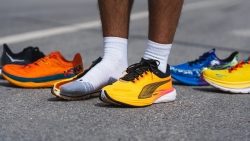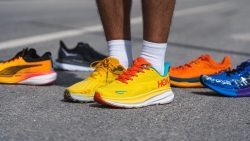7 Best Running Shoes For Hiking in 2025
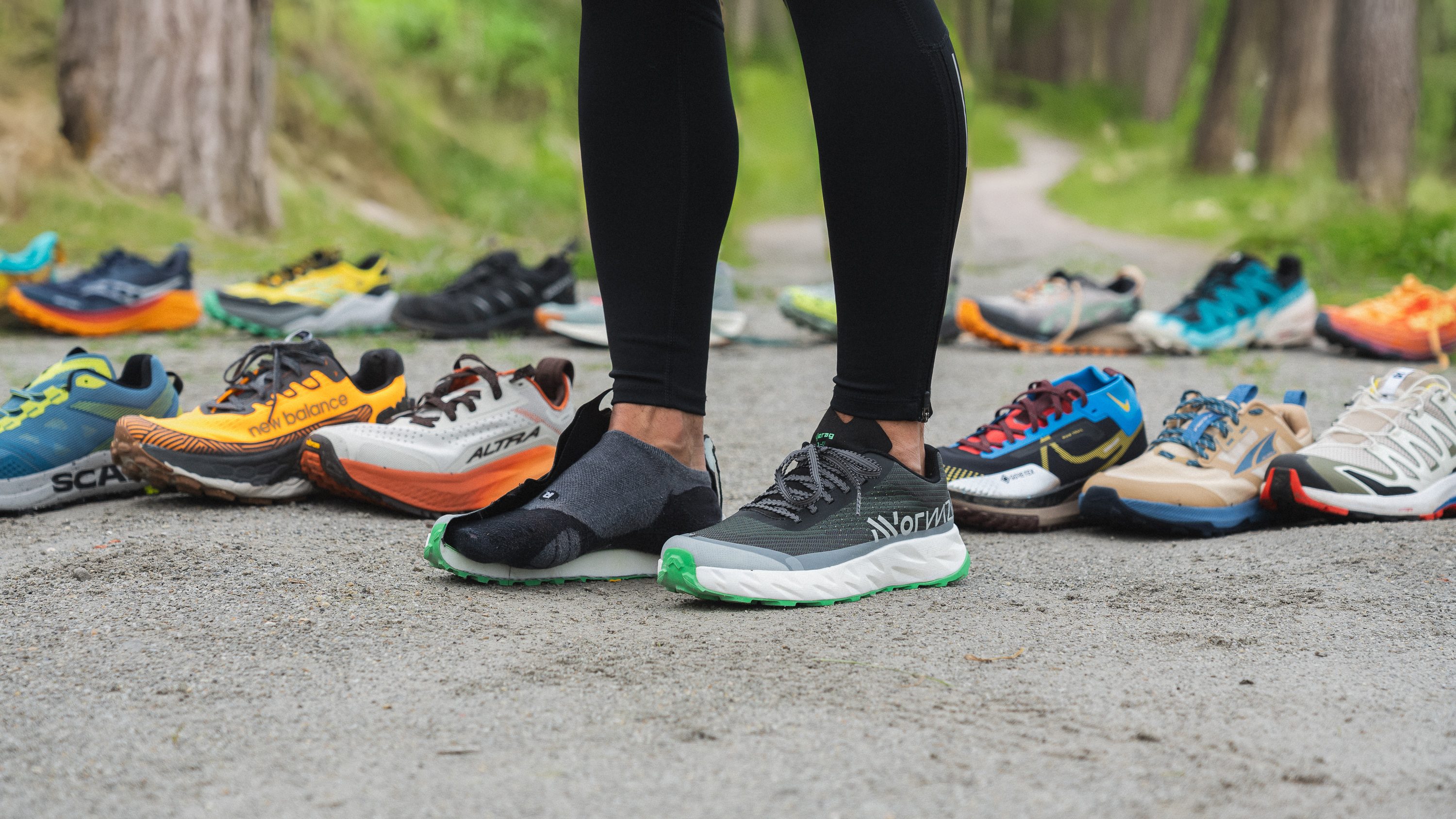
We buy shoes ourselves. We earn commissions when you buy through us, at no extra cost. Why trust us
If you’re planning to dabble in the murky world of hiking or running the trails, why pay the price of two pairs of shoes when you can have just one? Yes, you read it right. There’s an array of options you can choose from when it comes to a responsive hiker and a solid trail runner in one shoe.
We’ve provided a list of the best running shoes for hiking for outdoor enthusiasts who are looking for reliable shoes.
After hiking in many running shoes, we now give you our best selection – from the stickiest hikers to the most protective trail runners that offer the best bang for the buck.
How we test running shoes for hiking
Here at RunRepeat, we provide you with the latest updates and no-BS reviews on the best running shoes for hiking out there. These top picks are specifically highlighted after a thorough review process done by our in-house testers:
- We buy running shoes using our own funds.
- We test them to experience their performance on the trails in various conditions.
- At the lab, we put each model through a battery of tests. We measure the depth of the lugs, traction, outsole hardness and thickness, durability of the toebox, breathability, and other features relevant to hikers.
- We cut the shoes in half to find out what's inside, look at all the layers, and perform additional tests that can only be done on a shoe cut in half.
Best running shoes for hiking overall
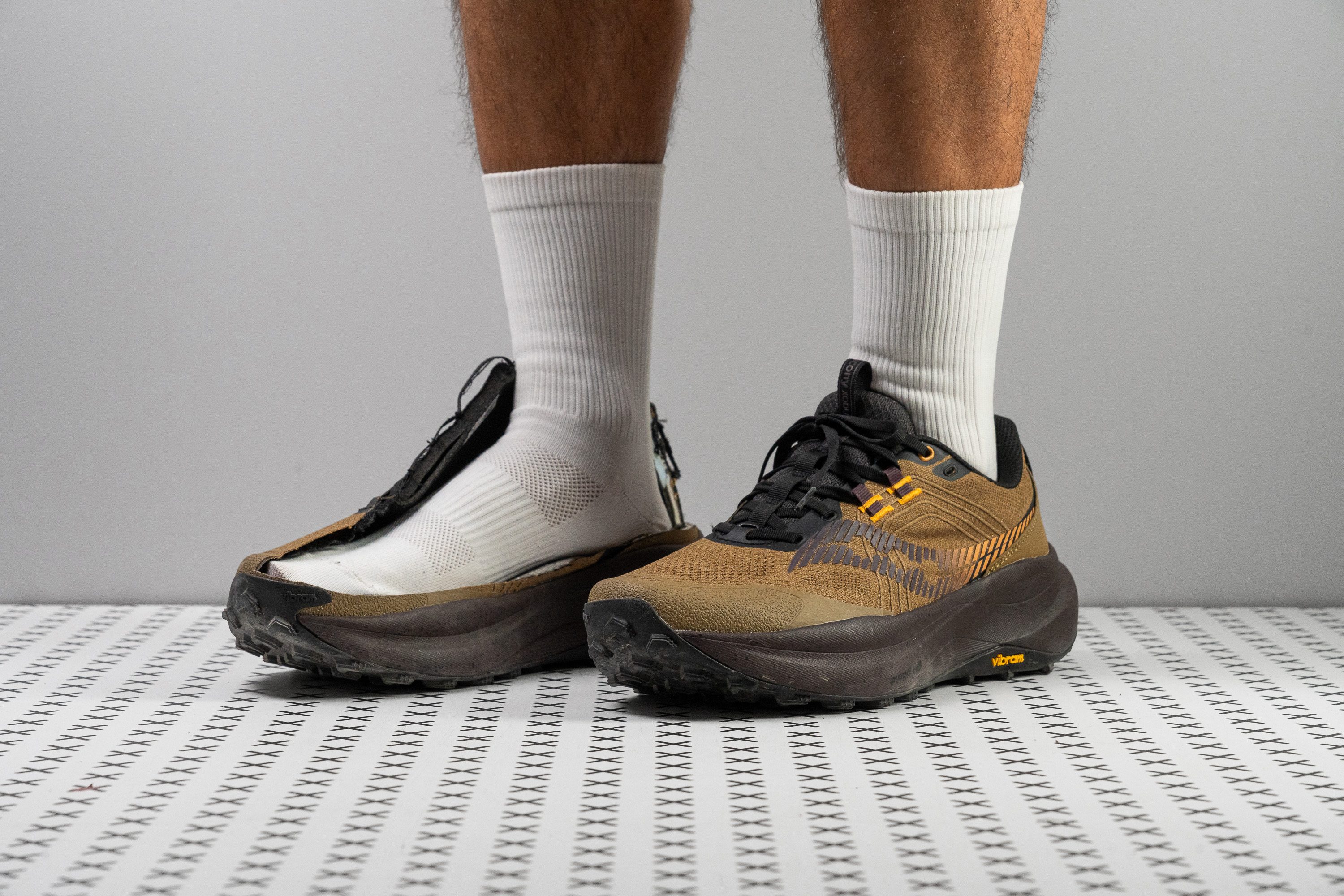
















































What makes it the best?
The Saucony Xodus Ultra 4 emerged as an exceptional shoe in our tests, prized for its reliable traction and dynamic cushioning. Stable, comfortable, and propulsive, our lab results agree it's the ideal choice for outdoor explorations and off-road adventures, earning our top spot for hiking-running.
The midsole brought a delightful experience, offering a beautiful blend of propulsion and impact protection to our strides. Our energy test returns impressive scores of 64.9% in the heel and 72.4% in the forefoot, while its 127 SA rating in our shock absorption test for both areas assures plush landings.
The XU4 features Vibram Megagrip, proving its traction across various terrains with a massive 0.72 friction score in our wet-condition test. At this level, it shows 20.0% stronger grip than average, further enhanced by its versatile 3.5 mm Traction Lugs.
Our feet feel confidently planted to the ground, courtesy of XU4’s wide and rigid midsole. It showed maximum resistance in our twist test (5/5) and measures a wider-than-average 116.7/97.3, ensuring we remain centred inside the shoe.
However, those who dream of a lightweight ride won’t find that in the XU4. Its 11.0 oz (312g) makes it less agile on foot.
Pros
- Amazing bounce from PWRRUN PB foam
- First Xodus Ultra with a Vibram outsole
- Stable platform underfoot
- Premium PWRRUN+ insole
- Works well for hiking too
- Full-length outsole coverage
- Excellent for ultras
- Fantastic traction on easy terrain
Cons
- Weight is becoming a real problem
- Tapered toebox fit
- Small price increase
- Weak heel padding durability
Running shoes for hiking with the best shock absorption
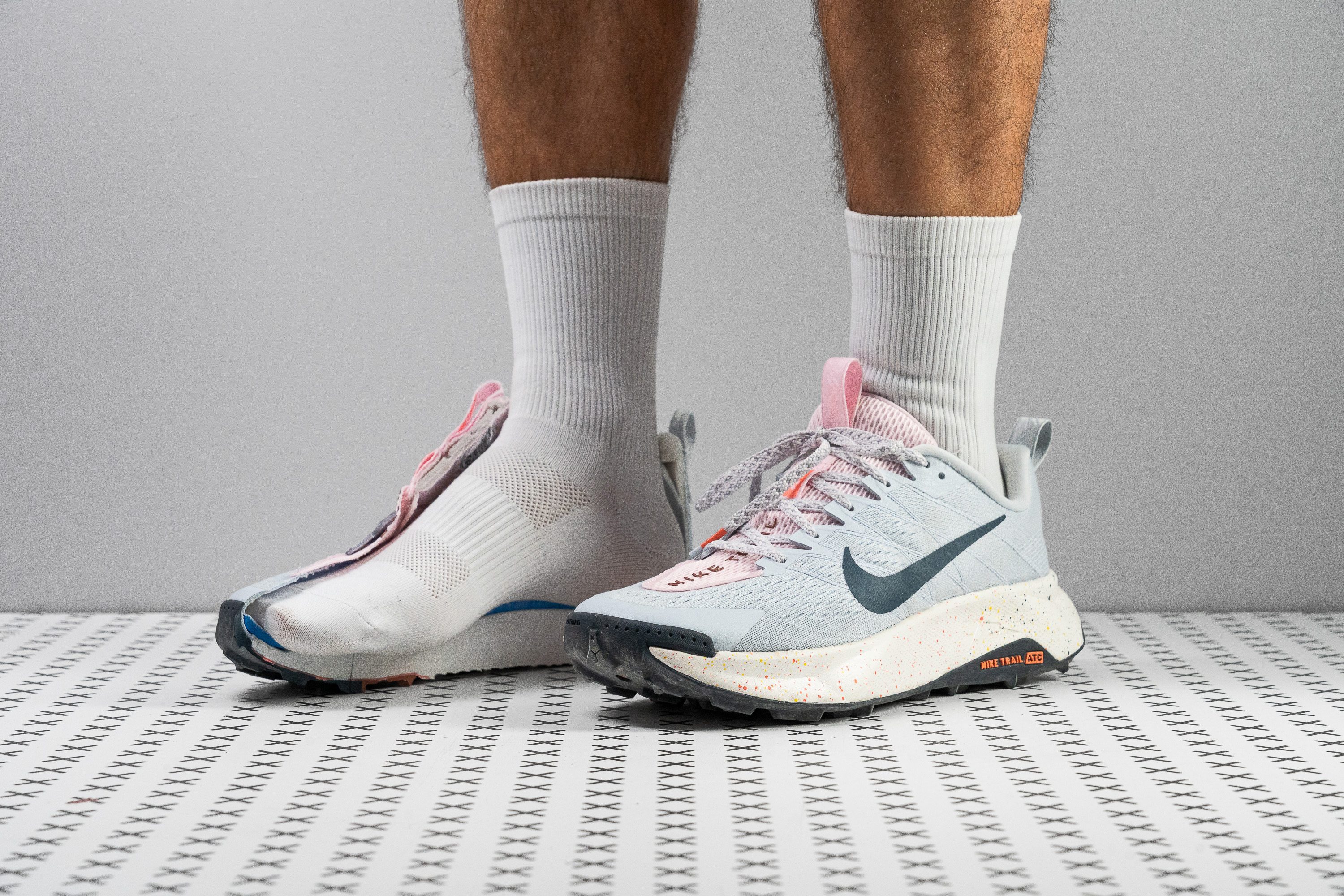










































What makes it the best?
Nike Wildhorse 10 is a reliable hybrid shoe with plenty of cloud-like cushion. It boasts a thick, buttery-soft stack, springy rebound, and a stable platform. It delivers consistent support and protection from roads to mountains, making it our best shock-absorbing hiking-running shoe.
It has a thick slab of ReactX foam that provides exceptional comfort and protection from landing impact and rocky terrains. Measuring 38.3/27.4 mm, it trails above average and offers superior impact protection than average with its 144/105 SA ratings. It’s one of the trail shoes that spoiled our feet the most with its well-cushioned ride.
Armed with a broad base, it secures our footing and allows us to confidently cruise through most paths, knowing we won’t slip or fall. We confirmed its generous width of 120.6/93.8 mm. It also features a Rock Shield plate in the forefoot for added protection.
Its midsole gives a good amount of bounce, allowing us to pick up speed. We recorded remarkable energy return scores of 61.3% in the heel and 61.5% in the forefoot.
More foam means more weight. At 11.0 oz (312g), it’s heavier to carry around than the 10.2 oz (289g) average trail shoe.
Pros
- Cushion-packed midsole
- Modernised upper
- Ideal for heel strikers
- Better build quality
- Bold new look with better finish
- Versatile
- Improved energy return
- Forefoot rock plate
- Forefoot rock plate
Cons
- Still too heavy
- Mesh upper is fragile
- Brutal price hike
- Less agile than predecessors
Best running shoes for hiking with a wide toebox
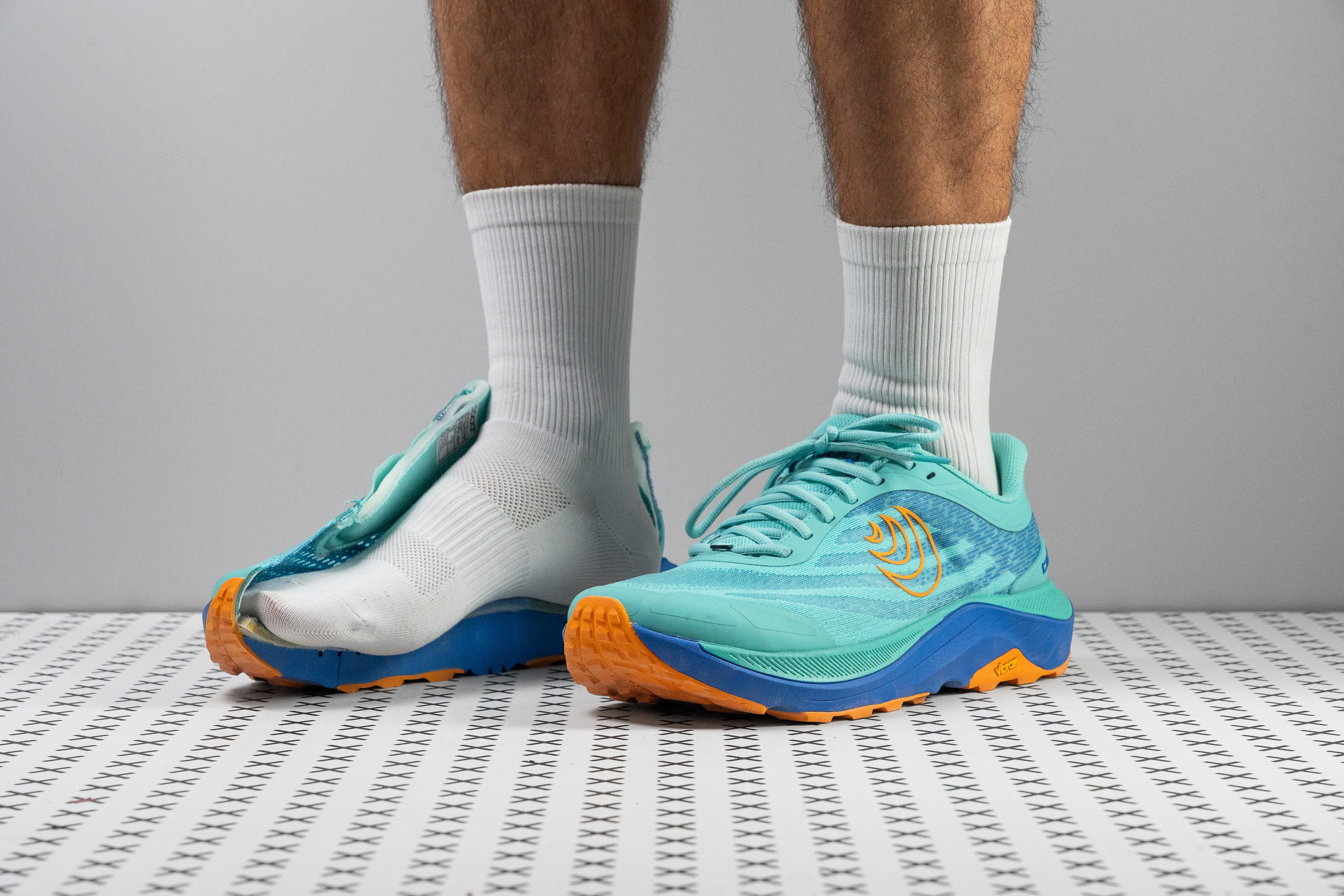












































What makes it the best?
Those of us who love a forgiving fit enjoyed our trials with the Topo Ultraventure 4. It has spacious interiors and a cushioned yet steady base, making it our best hiking-running shoe with a wide toebox in the lab.
Eager to test our observations, we created a gel mould to measure the interiors. At the widest part, the toebox measures 83.0 mm, a significant 8.4 mm above average. It gives room for our feet to swell and makes even our pinky toes feel welcome.
We experienced comfort from mile 1 to the last, evidenced by its generous 35.1/28.5 mm cushioning. The midsole’s pleasant touch was further confirmed when we recorded top shock absorption scores of 129/107 SA.
We landed each foot confidently thanks to the broad forefoot of Ultraventure 4, with a calliper reading of 119.4 mm. Its Vibram XS Trek compound also enhances control through its reliable grip.
However, we still find the midsole lacking in terms of responsiveness. Those who don't want a dull ride should explore elsewhere.
Pros
- Extra-roomy toebox
- Hardwearing Vibram outsole
- More flexible and comfortable than version 3
- Ideal for midfoot strikers
- Can handle ultra races
- Plush tongue improves comfort
- Excellent stability in the forefoot area
- Good lockdown with no tongue movement
Cons
- Not for narrow-footed runners
- Midsole lacks energy return
- No reflective elements
- Unstable heel
Best budget running shoes for hiking












































What makes it the best?
Among all hiking-running shoes we ran in, we deem the ASICS Gel Venture 10 as our best budget pick. For only £80 vs. the £140 average hiking shoe, it’s an all-around quality shoe that highlights value for money with its durability, flexibility, and refreshing ride.
GV10 is optimal for beginners and moderate trail runners as it gets the job done at a lower cost. Even right out of the box, this pair is ready to take on beaten paths, with a flexibility score 13.1% above average. In addition to its adaptive nature, the overall ride feels natural as the 12.0 mm drop promotes forward rolls and efficient turnover.
The mesh upper is a breath of fresh air, offering strong airflow as proven by its high 4/5 breathability rating in our smoke test. Contrary to expectations, it also resisted our Dremel fiercely and earned a high 4/5 toebox durability score.
In the outsole, we only managed to create just 0.6 mm of wear, an impressive result vs. the 0.9 mm average and more so for a shoe that costs 43.7% below average.
With GV10’s moderate stack and low impact protection, it emphasises ground feel. Runners looking for plush cushioning should go for another pair.
Pros
- Fantastic durability
- Amazing value
- Ideal for beginners
- Softer Amplifoam midsole
- Versatile for trail, travel, casual wear...
- Improved upper
- Plush tongue with pressure-free lacing
- Trail-inspired details at budget price
Cons
- Only for narrow feet
- Heavy
- Low shock absorption and energy return
Best lightweight running shoes for hiking
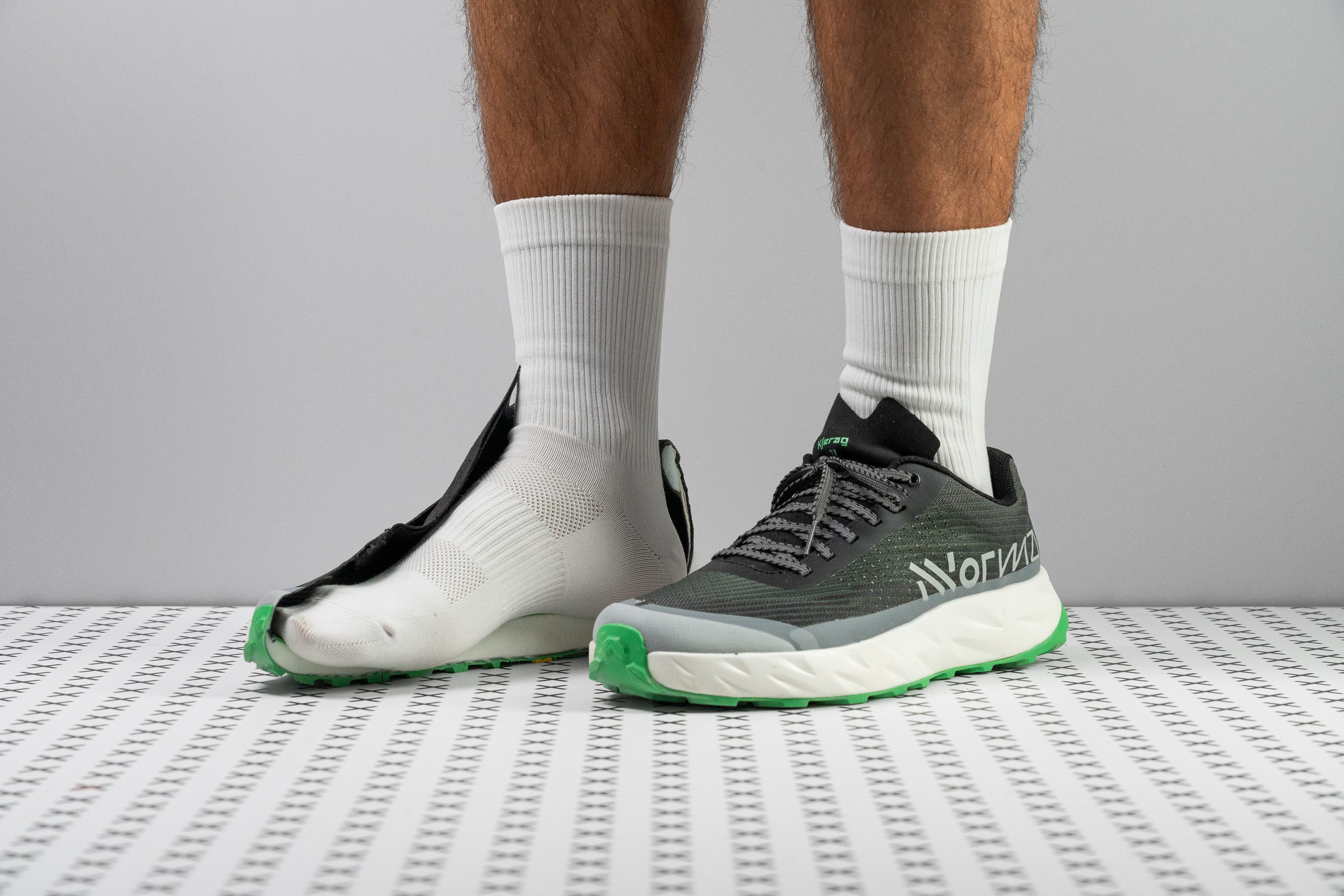





















































What makes it the best?
The NNormal Kjerag is a lightweight marvel that is super-fast, super agile, and super grippy! Our lab confirms it delivers a responsive and grounded feel that allows us to take on the mountains with pure speed. This pair feels like a breath of fresh air, making it our top lightweight hiking-running shoe.
The Kjerag instantly disappeared on foot and our scales show a mere 7.5 oz (214g) build, 26.7% lighter than the average trail shoe. The midsole barely fights our natural movement, which adds to its weightless feel. Our bend test validates our experience with flexibility 45.1% better than average.
Our runs emphasised the Kjerag is focused on speed and ground feel through its slim yet responsive cushioning. Our calliper shows there’s only 25.0/16.4 mm of foam between us and the ground, which encourages the strengthening of our leg muscles.
The Kjerag features the world-class Vibram Megagrip Litebase, which feels reliable on mixed terrains. The 3.0 mm lugs gripped the ground as needed and the tough 88.0 HC rubber prevented premature wear.
However, the Kjerag’s lack of cushioning demands near-perfect form and advanced technique to avoid foot pain and injuries. Those who need more support should find a more forgiving shoe.
Pros
- Premium materials
- Vibram Megagrip outsole
- Low carbon footprint
- Race-ready fit
- Lightweight
- Stable, grounded ride with tonnes of feedback
- Ideal for short races and skyrunning events
- Handles corners with ease
- Doubles as a hiking shoe
Cons
- Not the best for heel strikers
- High price tag
- Limited breathability
- No reflective elements
Best zero drop running shoes for hiking























































What makes it the best?
Staying true to Altra’s core, Lone Peak 9 delivered the most seamless zero-drop experience among hiking running shoes. Even our lab proves its minimalist build drives an agile yet stable ride, allowing us to manoeuvre through unpredictable trails with ease and control.
We have a heightened sense of the surface we’re tackling thanks to the low configuration of the shoe. Other than its below-average 23.3/23.3 mm build, it features a rare and confirmed zero drop.
The platform is composed of a dense EGO foam which gives a nice rebound and a hint of stability in our strides. Our durometer reveals it’s a balanced 23.4 HA, ensuring it won’t bottom out even as we’re loaded with heavy backpacks.
It also features a wide toebox that is aligned with our natural foot shape to improve comfort and enhance a well-planted feeling. We used a gel mould to capture its shape and discovered the big toe area is at 85.3 mm vs. the 74.8 mm average.
Unfortunately, the weak spot we found is it’s a bit stiffer than the average. Those who prefer flexible midsoles for a full barefoot sensation should explore alternatives.
Pros
- True zero-drop geometry
- Extra-roomy, foot-shaped toebox
- Vibram option finally available
- Improved forefoot stability
- Flat-profile, natural ride
- Secure lacing system
- Still a low-stack shoe!
- Standard and wide versions
- Good durability
Cons
- Feels really heavy for its size
- Stiffer than previous versions
- Lacks airflow
- Having two outsole versions adds confusion
Running shoes for hiking with the best durability
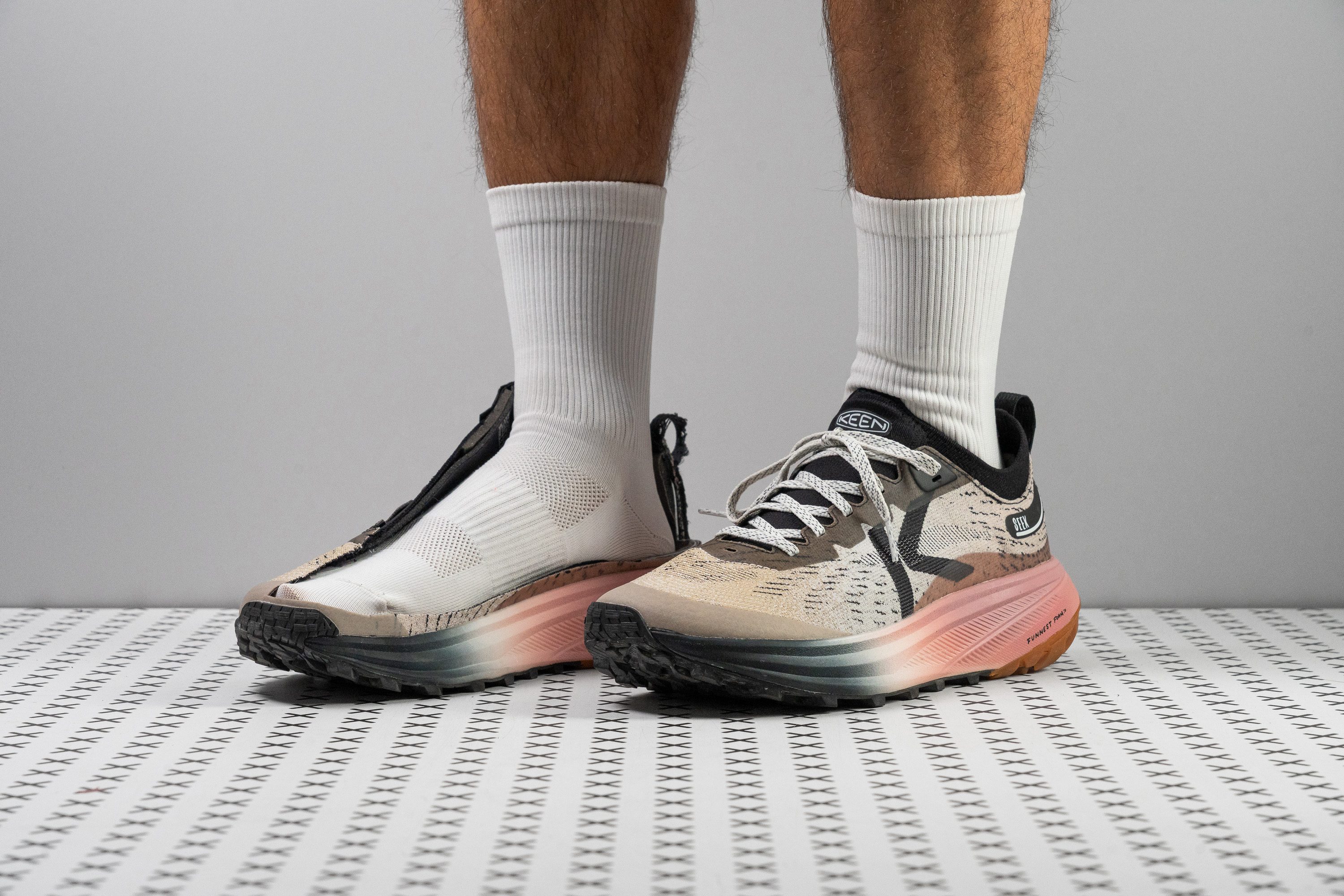














































What makes it the best?
The KEEN Seek epitomises protection through its heavy-duty build and generous cushioning. Its impact-reducing yet flexible midsole, hard-wearing outsole, and sturdy yet breathable upper collectively deliver exceptional protection throughout. Extensive lab testing confirms it's the most durable hiking-running shoe.
The outsole features deep 4.1 mm lugs that handle various surfaces with ease. In our Dremel test, Seek only sustained 0.6 mm damage, proving its reliable underfoot protection and wear resistance compared to the 0.9 mm average.
The midsole strikes a perfect balance between impact protection and freedom of movement, boasting a 36.3/27.7 mm stack. It effectively absorbs impact upon landing, proven by solid shock absorption scores of 137/110 SA in the heel and forefoot, respectively. Despite its thickness, the Seek proves to be 22.6% more flexible than average in our bend test.
When it comes to the knit upper, our tests affirm its impressive breathability (4/5) and toebox durability (4/5). This combination of airflow and reinforcement is truly remarkable and a rare sighting in the lab.
However, the Seek’s robust design is better suited for hiking rather than fast and technical trail running, as it may feel too heavy for those activities.
Pros
- High shock absorption
- Remarkable overall durability
- High-quality knit upper
- Super-comfy sock-like tongue
- Advanced outsole design
- Works well for hiking too
- Handles well cold temperatures
- Flexible despite high-stack build
Cons
- Price may be high for some
- Heavier than competitors
- Not ideal for narrow-footed individuals
- Limited heel stability
When it’s OK to wear running shoes instead of proper hiking footwear
There’s a reason a lot of hikers we see on the trails are wearing hiking shoes. So, when can you ditch them and use trail running shoes? Here’s our recommendation based on our experience:
- When you prioritise speed and grip. Want to be fast and agile.
- When you’re hiking in very hot weather because trail shoes are much more breathable than hiking shoes
- When you’re not wearing heavy backpacks. Trail running shoes usually don’t offer enough support for that
- When you know you might also run a few sections
- When you don’t plan to hike over insanely technical, rocky terrain that would destroy the trail shoes. Hiking shoes are stiffer, more durable, and a better option in this case
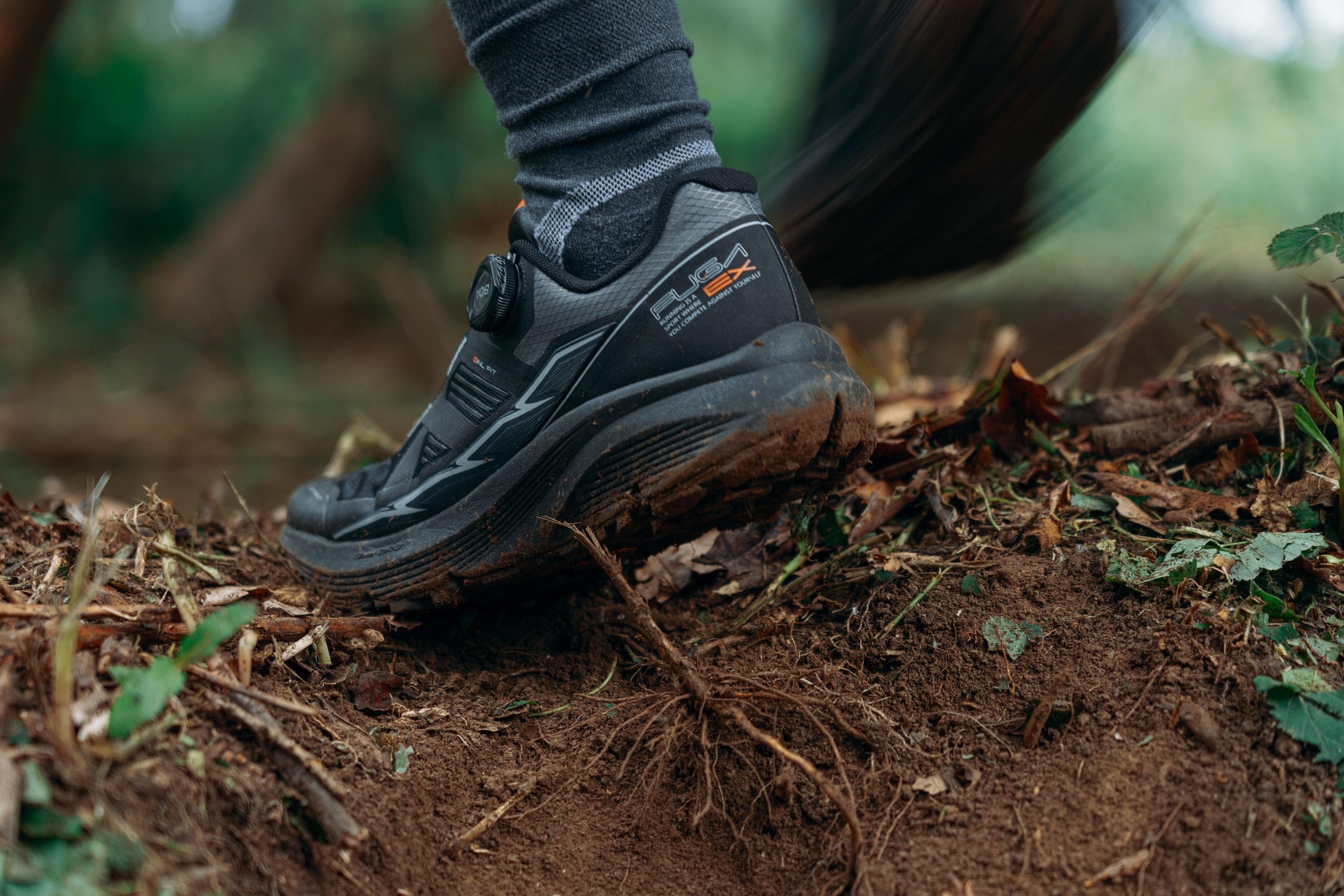
3 things to look for in trail running shoes for hiking
Now that you’ve settled for trail running shoes for your hikes, here’s what to look for:
- Grip (depth of lugs) which depends on the terrain
- Breathability or waterproofness; this depends on the weather conditions
- Stability and support that you may need; this depends on the terrain, durability of the hike, and the weight you’re carrying

Below we dig deep into every section.
Grip in trail running shoes used for hiking
We split the terrain into 3 sections and, based on that, we suggest different shoes:
- Light terrain: hard-packed trails, well-maintained trails, nothing technical. For such terrain, we recommend trail running shoes with lugs that are up to 2mm deep
- Moderate terrain: or all-terrain, wide variety. Very versatile, and can do a bit of everything but nothing too extreme.
- Technical terrain: off-trail, with a lot of debris/obstacles, sharp rocks, mud, and so on. For this terrain, we recommend shoes with lugs that are at least 4mm deep.
In our shoe lab, we measure the thickness of the lugs using a digital calliper.

Of course, there’s always some overlap. Shoes with 4.5mm lugs that are very bulky don’t work well on technical terrain where speed and agility are prioritised. Just like some trail shoes with shallower lugs but with an aggressive fit can perform well on moderate terrain.
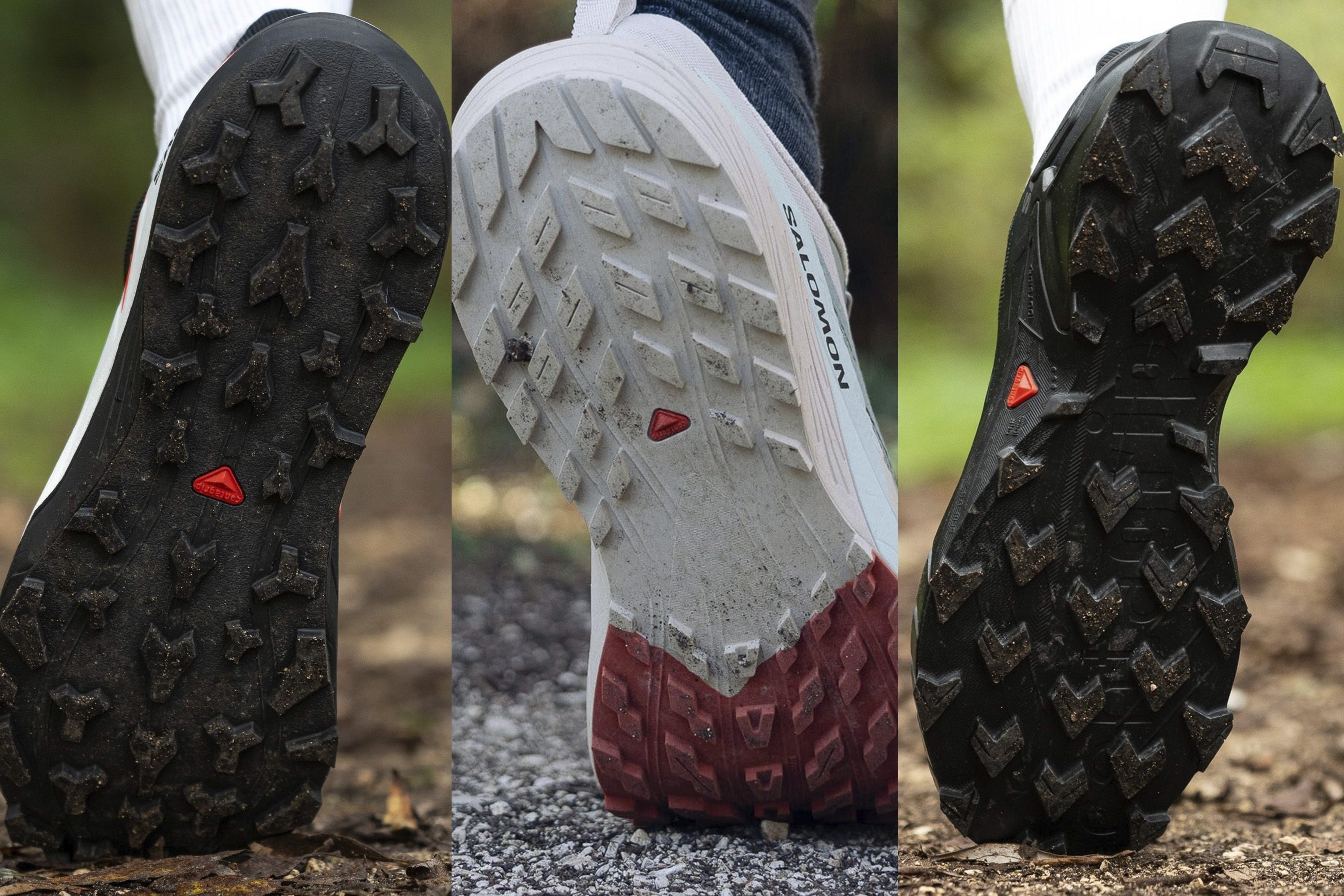
The thread pattern also plays a role here. If you want the mud to shed well, look for deep lugs that are spaced further apart.
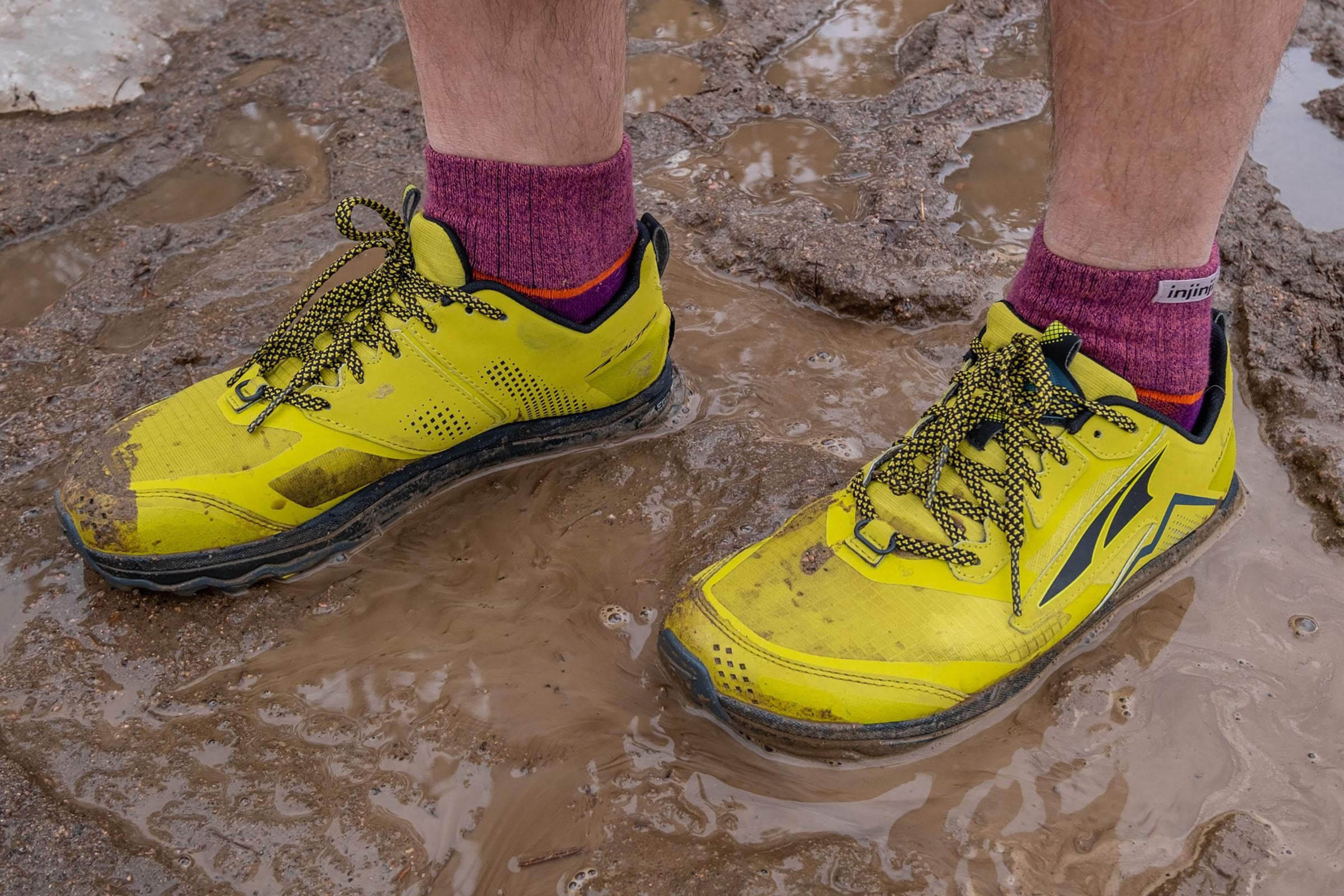
If you plan to hike in loose, soft ground, look for lugs of different shapes and angles. Having lugs of different orientations works great for varying hikes that cover both uphills and downhills.
Breathability of running shoes for hiking
This is one of the best features of trail running shoes that wins the battle between the trail shoes and hiking shoes. Hiking shoes are rarely as breathable!
To test breathability, we pump the smoke into the trail shoes and then watch how fast the smoke comes out, where, and how much of it. Based on this observation, we rate the breathability of these shoes on a 1-5 scale. 5 is the most breathable.
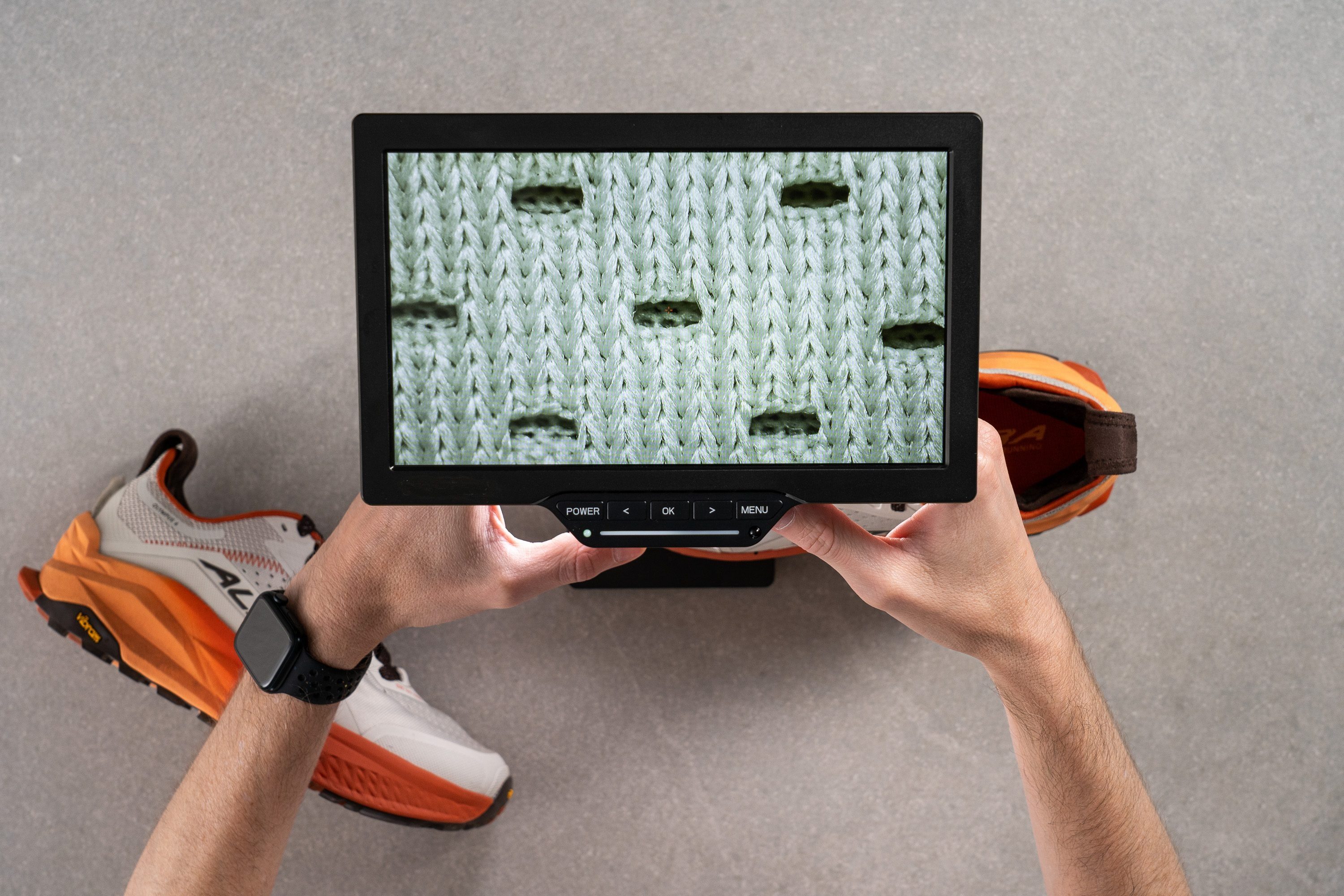
Then we look at the upper under the microscope. This way, it’s easy to understand better what’s going on: are there any ventilation holes, how large are they, if there’s more than 1 layer of fabric and where the 2nd one is placed, and so on.
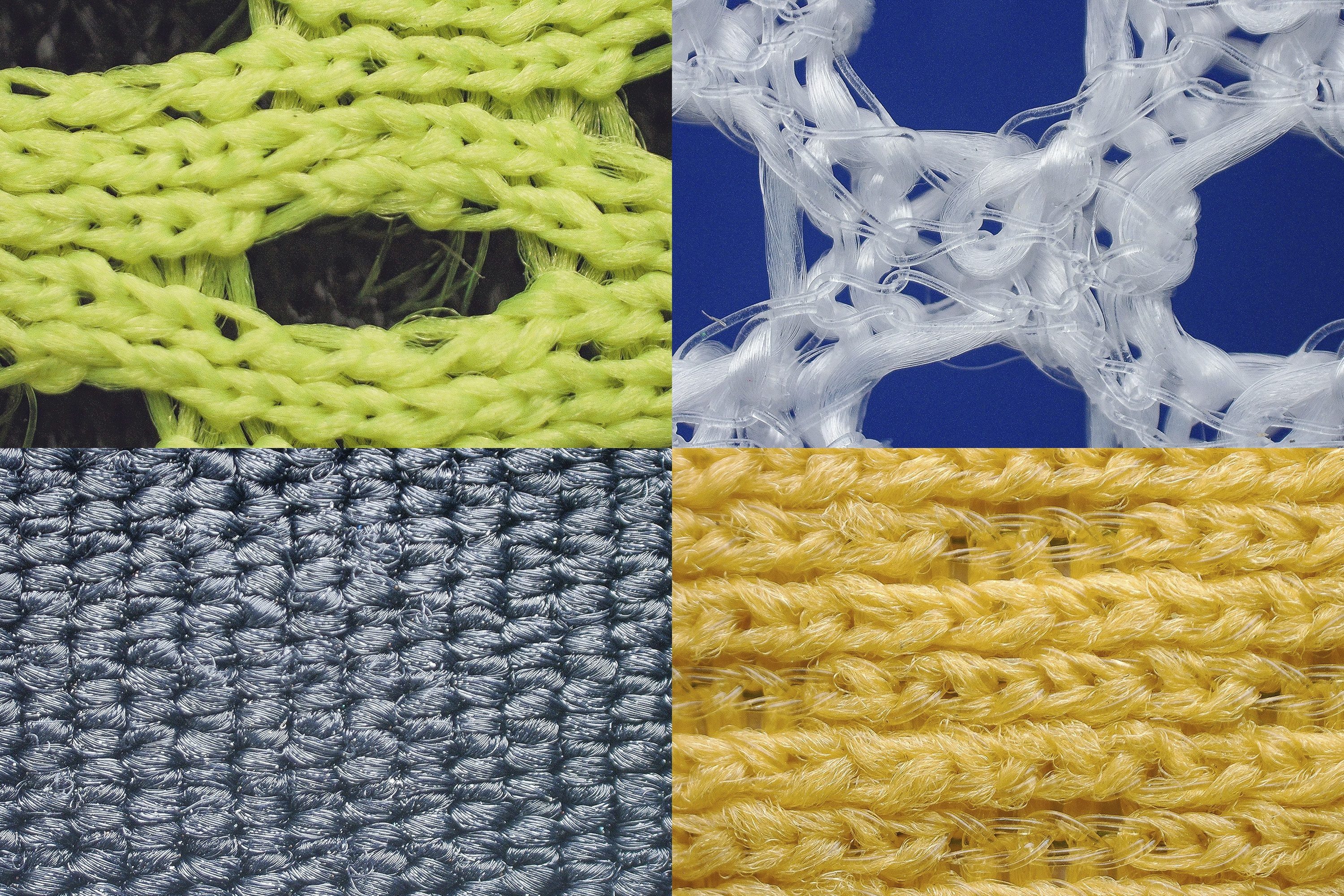
Breathable uppers have a loose structure that sometimes features even large ventilation holes (up), while non-breathable uppers are very tight, have no holes, and are often 2-layered (2nd layer is often the waterproof membrane).
Waterproof running shoes for hiking
If you think there will be puddles on your hike, shallow stream crossing, or light rain/snow, you might want to consider getting waterproof running shoes for hiking.
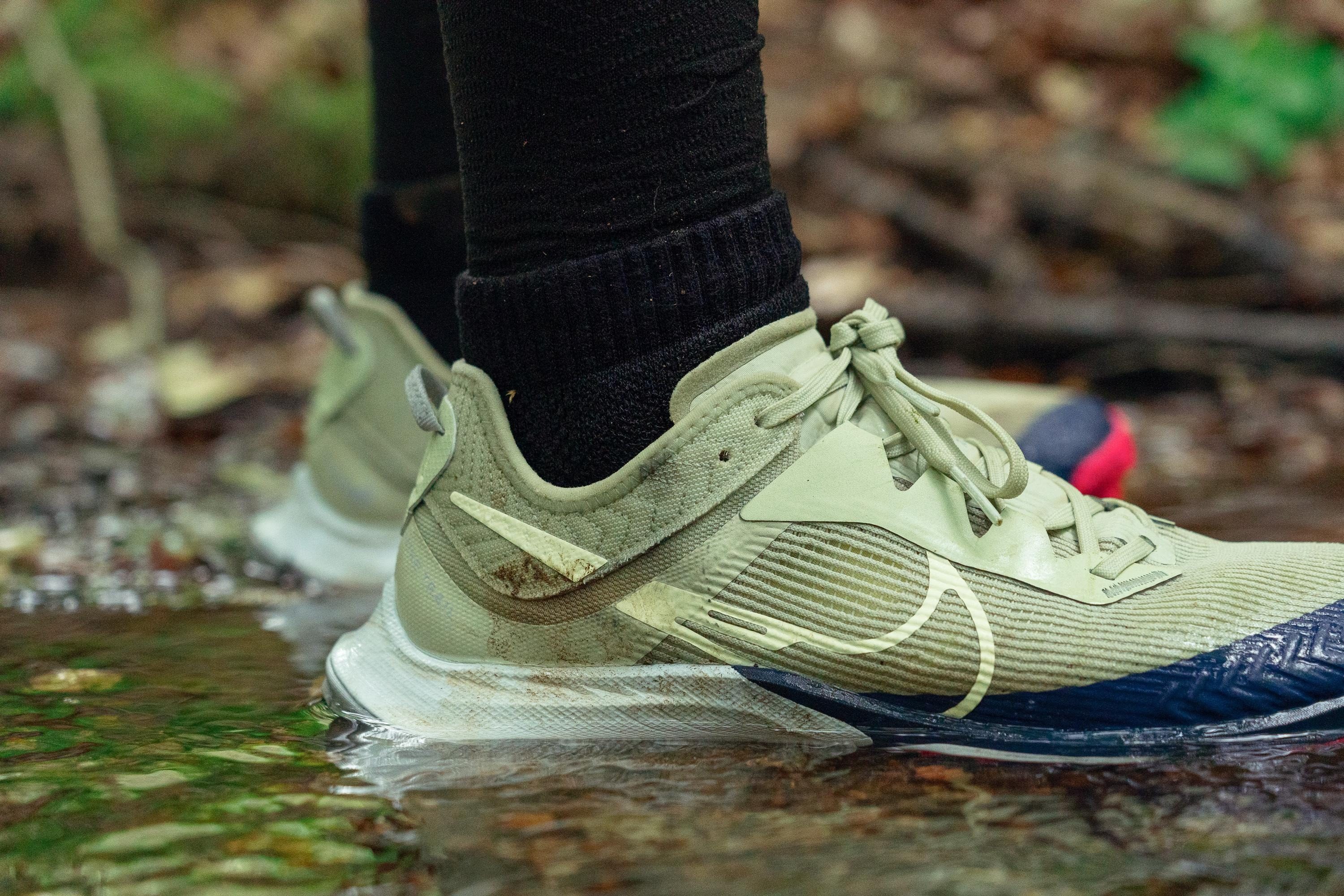
We wrote in great detail about when (not) to choose them, how to recognise them, and what to pay attention to in our guide on Best waterproof trail running shoes.
The main difference between waterproof and non-waterproof running shoes for hiking is breathability. Waterproof uppers do not breathe almost at all (on average), while in the realm of non-waterproof trail shoes you can find quite breathable ones.
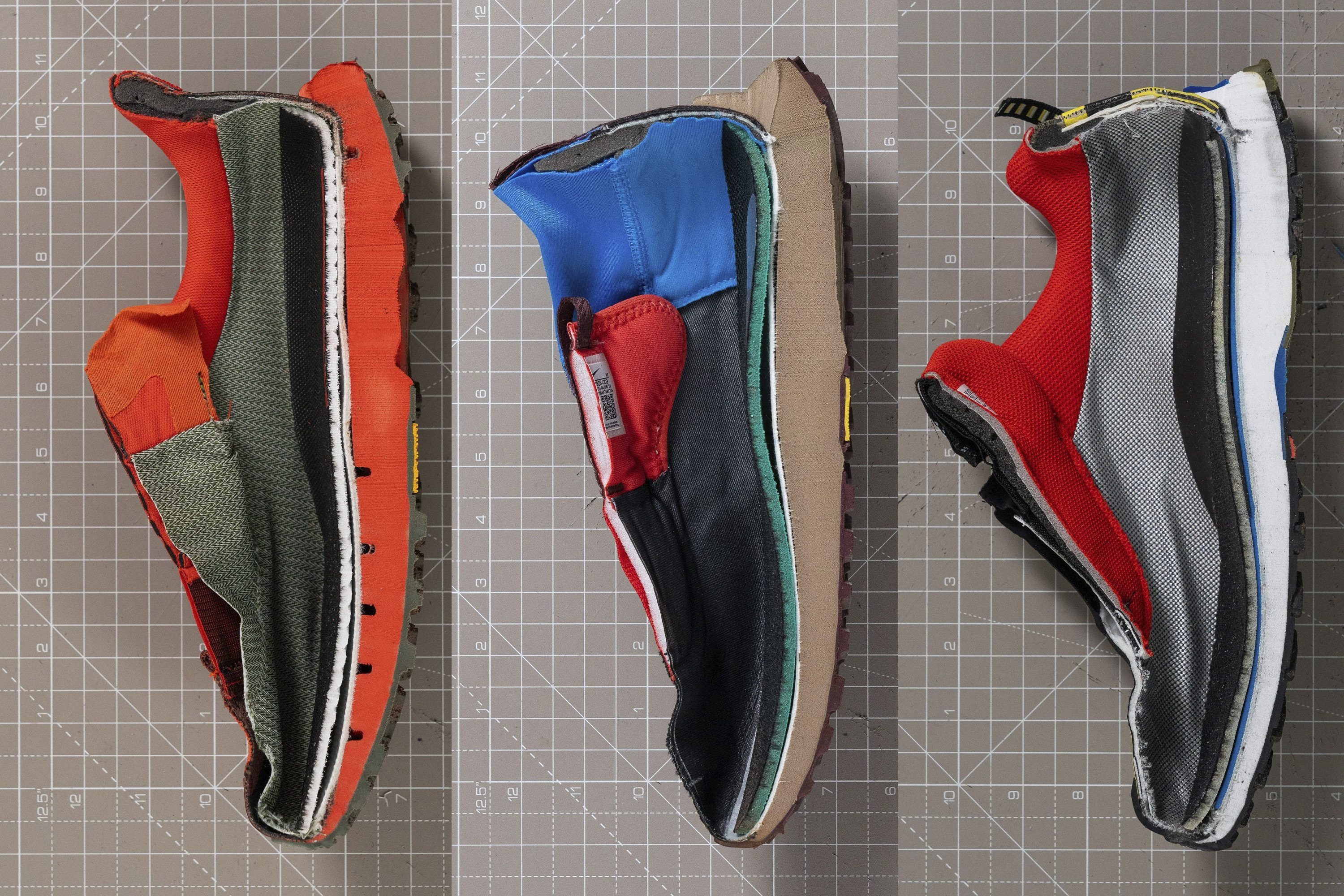
This is because the waterproof uppers have an additional layer: a waterproof membrane. So, there are 2 layers instead of 1.
Stability and support of running shoes for hiking
There are 3 few things you can pay attention to if stability and support are worrying you:
- The width of the base. The wider the midsole, the more stable the shoe
- Stiffness of the base: stiffer shoes offer more support and stability
- Other supportive elements like structural stiff upper enforcements or heel counters
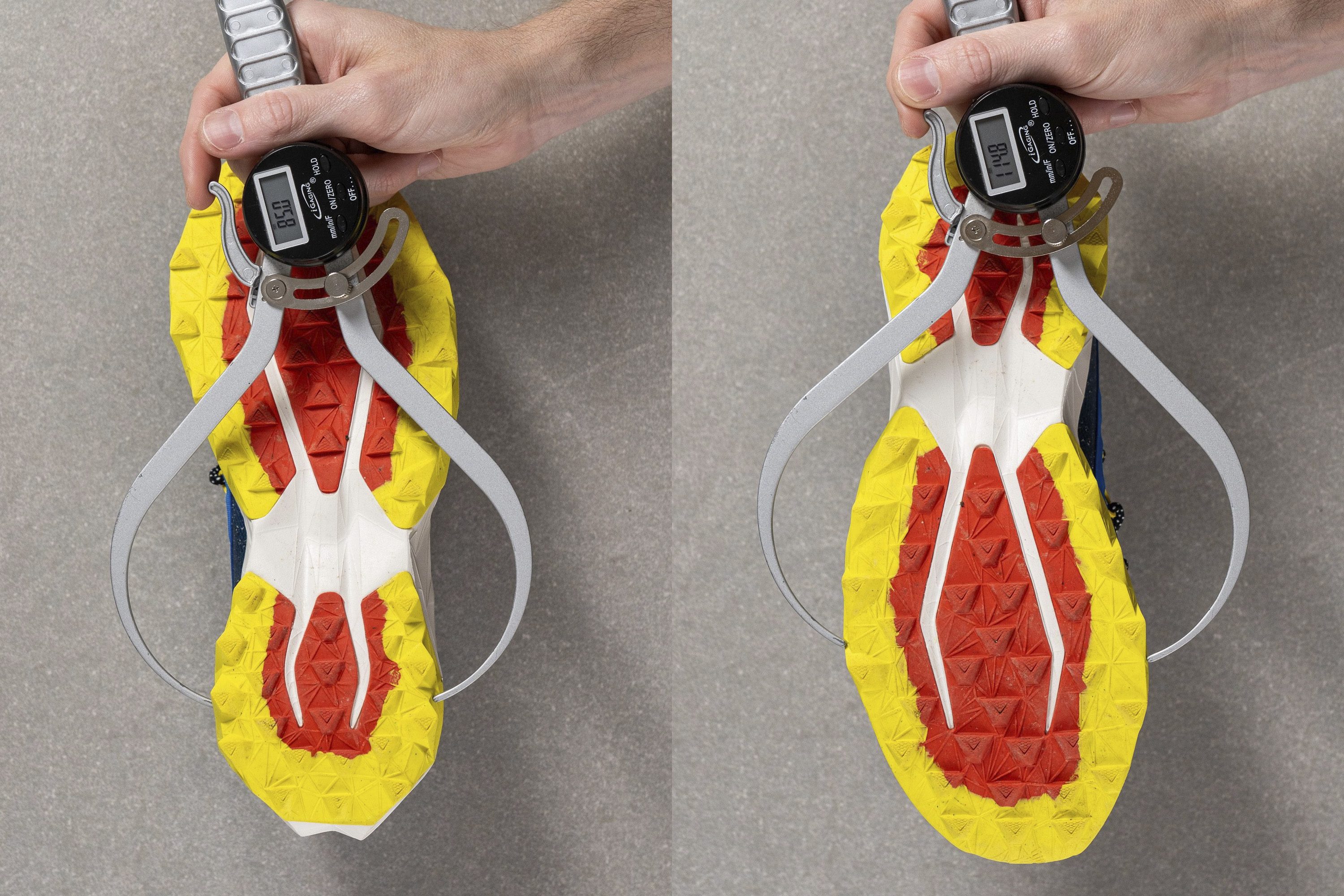
We use a digital calliper to measure the width of the base. We measure it both at the forefoot and at the heel but recommend focusing on the heel for hiking as that’s where we land while walking (hiking),
To test the stiffness of the trail running shoe, we secure the toebox in place and bend the shoe to 30 degrees. Then, we look at the force needed to bend it. More force = stiffer shoe.

So, if you want a stiffer platform for extra support and stability, we recommend the shoes below.
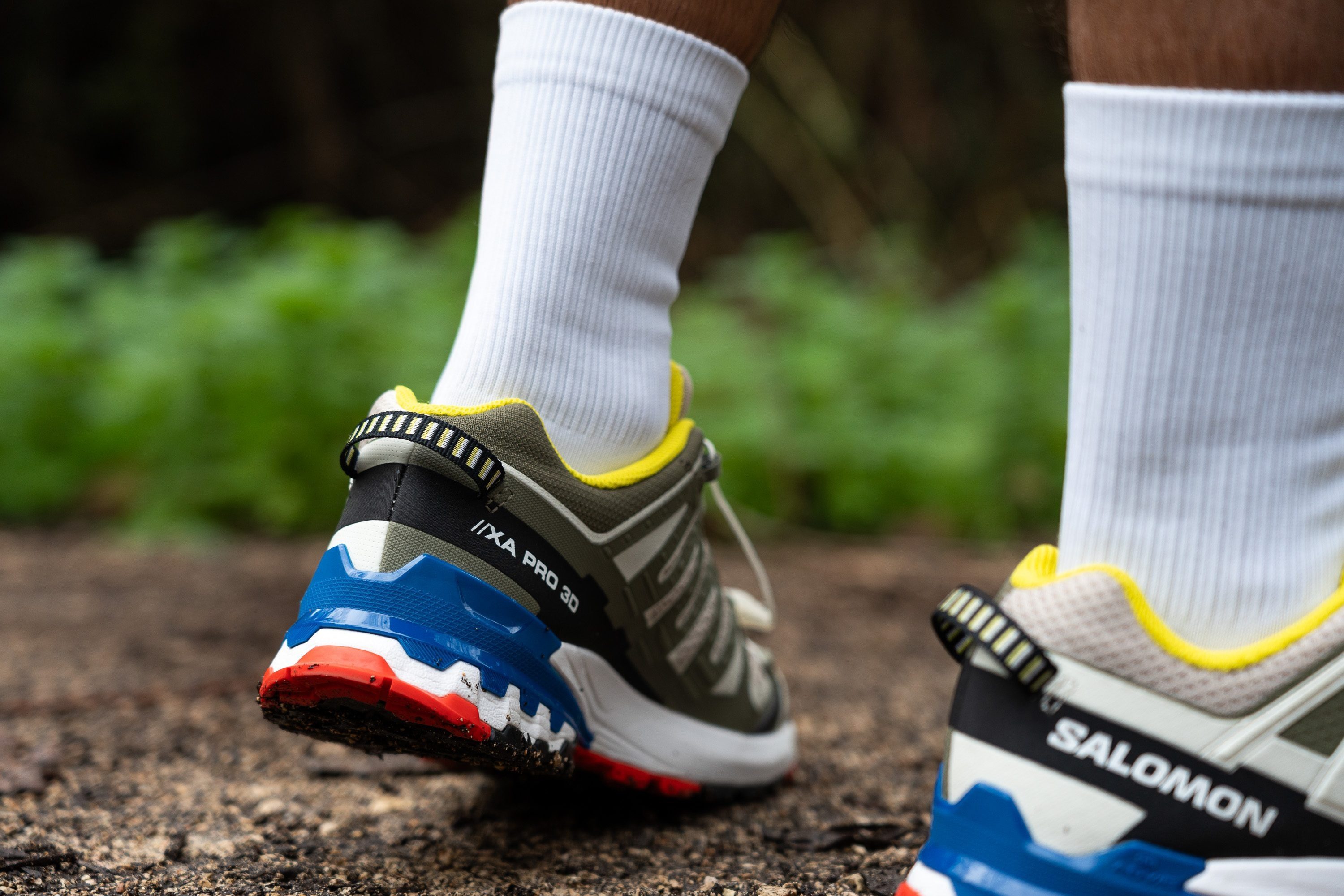 Stiff external heel counter that stabilises the heel and offers great support
Stiff external heel counter that stabilises the heel and offers great support
Trail running shoes vs. hiking shoes
Here’s an overview of what to expect if you’re changing from hiking shoes to trail running shoes. These are general differences, of course, there are models that are outliers.
|
Trail running shoes |
Hiking shoes |
|
Lighter |
Heavier due to stronger materials and more protection |
|
Less protective; often feature a softer and breathable upper; softer outsoles |
Bigger toe bumpers; more rubber walls on the upper for protection; harder outsoles |
|
More flexible |
Stiffer platform. You can’t run in these. |
|
Not enough protection for very rocky, technical terrain. They can be easily destroyed on technical terrain. |
Very protective for rocky terrain and very durable, made to endure such activities. |
|
Usually not enough support for heavy backpacks |
Supportive enough for heavier backpacks |

